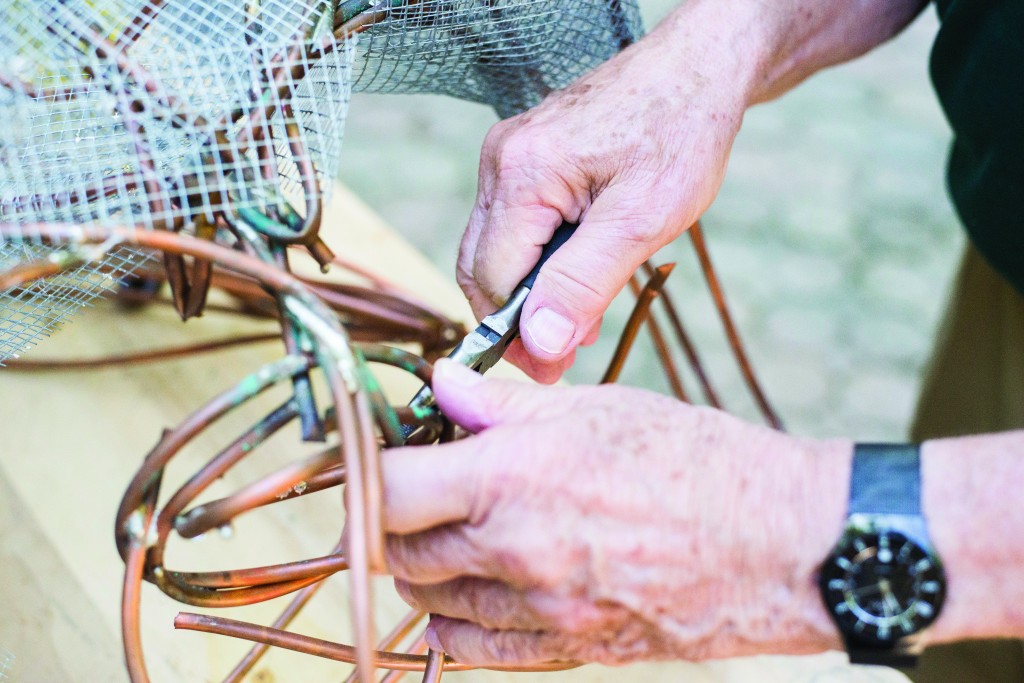
A documentary portrays how Holocaust survivor Frank Grunwald’s love of art helped rescue him then and now
Frank “Miša” Grunwald looked into a mirror, and he didn’t recognize himself.
“People still recognized each other in spite of the fact they were skin and bone,” the Fishers resident said. “They looked like skeletons, really.”
The year was 1945, and his long, horrific journey through the Third Reich’s machine that systematically annihilated millions of human beings had just come to a close, but the painful memories and psychological affects would persist decades later.

A child going through a despotic system only designed to crush and defeat humans, his happenstance, luck, and sometimes, bad luck dictated events that allowed him to live.
It was happenstance that put Grunwald and a Pennsylvanian teacher in the same room, leading to a partnership and documentary that now has been sent to thousands of people and shown overseas.
Today, Grunwald, a Fishers resident, is sipping coffee and answering questions with the teacher who was inspired to document his story.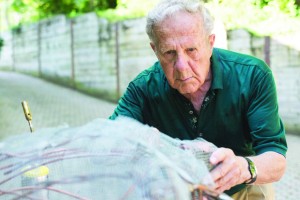
Grunwald grew up in love with art, so much that sculpting and music are part of the film. He said he doesn’t like the publicity, and he wants to be remembered as an artist, among other things, not as a Holocaust survivor.
The teacher doesn’t see him that way – he sees him as the person he is.
After spending 15 years in the film business, Sean D. Gaston turned to teaching. He participated in a 2010 educational conference on the Holocaust in Indianapolis at which Grunwald spoke.
By the time the presentation was finished, Gaston had a few questions.
“I was nervous during the Q-and-A session about asking him,” he said. “I asked him three questions: Has anyone ever documented your story? Where did you get all your photos, and do you want to make a movie?”
He said he could not understand or judge what the final outcome of the project would be, but Grunwald said his initial reaction was positive.
“I’m not going to be here forever,” he said. “My feeling about the story is that it’s a lucky story, but it’s not a unique story because so many kids and even grownups went through a similar experience that I went through. I was in the same place that they were in. I saw the same things that they saw. I ate the same food that they ate. I was as hungry as they were. So we all went through a very similar experience, the difference was I was one of the lucky survivors.”
So began the production of “Miša’s Fugue.”
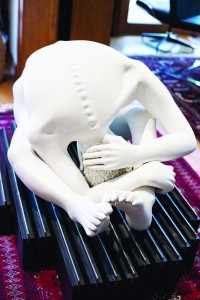
Pulling from multiple departments at his school – Fleetwood Area High School – Gaston, volunteers, colleagues and students set out on a two-year ordeal that yielded a movie that preserves one man’s legacy and the horrors that sought to cut it short.
The score was written. Art was created. A five-and-a-half hour interview captured Grunwald’s story, which accounts for 116 transcribed pages at more than 36,000 words. “Miša’s Fugue” has a run time of 97 minutes.
Pieces of the story were inevitably left on the cutting room floor, with some of them being inappropriate for the film’s target audience, high school students, according to Gaston.
“The last thing I wanted to do was scar some kid right before he’s going to eat lunch,” he said.
But challenges to keep Grunwald’s story centered on the classroom weren’t the only reasons some of the content was left out. The reasoning for cutting ranged from complex to simplistic, but what is clear from the first moment the documentary comes to life on the screen is that Grunwald’s memory and power to recall the smallest, yet most revealing, details are powers to be reckoned with.
In an almost eerie account, Grunwald detailed being a small child at the beginning of the Nazi occupation in Prague, Czechoslovakia.
He remembers getting into the seat of a large gun and describes the piece of destructive equipment with uncanny aplomb, all the way down to the sight at its end. It was about that time he says he and his brother knew something was afoot.
In the span of 97 minutes Grunwald manages to divulge countless details of the struggle he and many others went through.
“I hope people generalize it, even though it’s a personal journey,” Grunwald said. “I hope people understand that it’s not unique, that it’s typical.”
Gaston said the exact opposite idea – that atypical things occurred – drew him to the story.
Grunwald notes that many of the experiences he had weren’t exclusive to the Jewish community, with many of the camps he saw being “examples of mistreatment of humanity.”
He remembers being stuck in a train car with a bucket for drinking water and a bucket for human waste and being covered in human ash if the winds blew in the right direction at Auschwitz.
He remembers seeing dead bodies in a ditch during a forced march and throwing an overcoat and attempting to throw a pair of boots over barbed wire to his father.
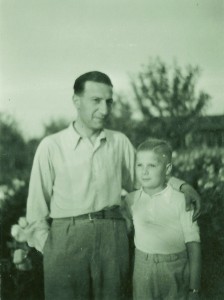
But, for all the details that seem to be universal, different stories emerge from Grunwald that add a touch of extraordinary to the documentary.
During his time in Auschwitz, Grunwald befriended Dina Babbitt, an artist the infamous Dr. Josef Mengele was using to document the gypsies coming through the camp. She introduced him to her boyfriend, Willy Brachmann, another prisoner, who was in charge of their camp.
Brachmann would later save Grunwald’s life. Once the regime determined the camp Grunwald was part of no longer had a part to play, it was time for medical inspections, and both Frank and his brother, John, were put in the line that would not make it.
As Grunwald tells it, in the span of eight seconds, Brachmann pulled him out of the group and put him in another, sparing him from the fate Mengele assigned.
And while his mother, Vilma, and brother, John, did not survive the Holocaust, a communiqué from her did.
He didn’t see it until the day his father died, and as he says in the documentary, he only became comfortable reading it in the past few years.
At this point, Grunwald is reminded of his experiences as many as 30 times per day. Simple actions like eating dark bread trigger the memories.
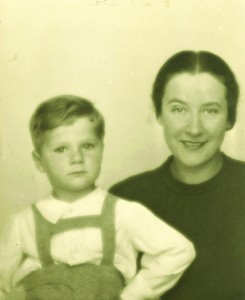
It’s at those points in his day that he tries to think of something to counter those feelings.
“(I) don’t know what the coping mechanism is,” he said. “When things start getting darker emotionally for me, I attempt to leave that train of thought as quickly as I can.”
Grunwald credits his mother, who built his confidence and pride, for his survival throughout the Holocaust and the difficulties that followed.
He notes that anti-Semitism and fears to share his heritage continued after the horrific two years, nine months and 21 days in the Third Reich’s death machine.
But in that little note Vilma passed onto his father, Kurt, one piece of advice lends a sliver of hope: “Remain healthy, and remember my words that time will heal everything. At least it will heal most of it…”
To learn more about the documentary or order a copy, visit www.fahsdocproject.com.


